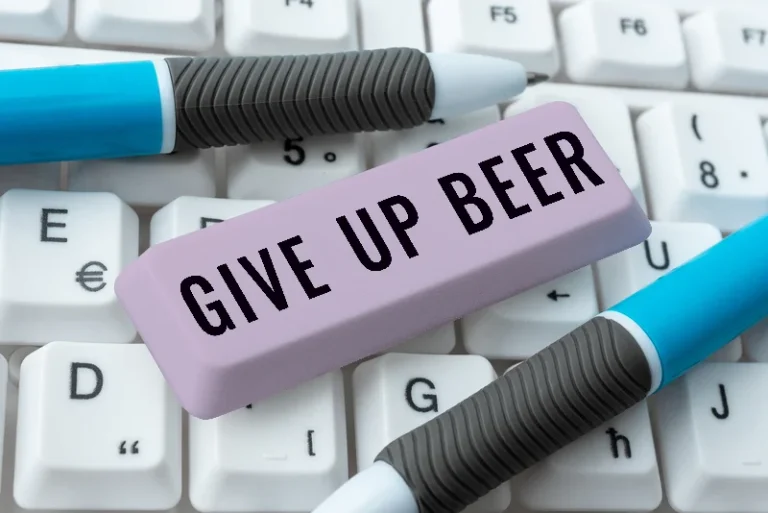
However, some Mucinex combination products also contain dextromethorphan and acetaminophen. Mixing alcohol and Mucinex products that are designed to treat cold, flu or allergy symptoms can cause liver damage and other serious side effects. Sleep aids such as Ambien, Lunesta and Sonata slow activity in the brain to help a person fall asleep. When the sleep aids are combined with alcohol, they can severely impair coordination, disrupt memory and make a person pass out. Use of prescription and non-prescription drugs, as well as herbal remedies, also is extremely prevalent.
NIAAA
- Checking for interactions and discussing them with your doctor or pharmacist is the best way to prevent harm.
- While one or two alcoholic drinks on Stendra® may not cause serious problems for most people, combining these two substances can make certain risks and side effects more likely.
- If you are not sure if you can safely drink alcohol while taking a certain medication, read the label carefully and consult with a pharmacist or doctor.
- Combining alcohol with ibuprofen can lead to a higher risk of stomach upsets and stomach bleeds.
- Ask your prescriber, as some antidepressants may increase drowsiness and make driving hazardous, especially if mixed with alcohol.
Alcohol should be avoided when taking doxylamine due to the risk of additive side effects,includingimpaired judgment, thinking, and motor skills. Based on a note to consumers, the severity of combining Unisom and Twelve-step program alcohol is major and it’s advised not to take this medication with alcohol. Mixing sleeping pills and alcohol can also lead to sleepwalking and impaired memory. There areseveral documented casesof people sleepwalking, sleep-eating and even sleep-driving on the popular sleeping medication Ambien. Because both sleeping pills and alcohol have a sedative effect, mixing the two might seem harmless.
Senior Health
If you’re not sure if a medication can be combined with alcohol, avoid any alcohol consumption until your doctor or pharmacist has told you that it’s safe to mix the two. Frequent or regular use of both sedative sleeping pills and alcohol can result in even more severe, or complicated withdrawal when attempts are made to quit using them. In such instances, it is important that people trying to quit do so under the care of physician. When you recommend or prescribe a medication that can interact with alcohol, this scenario presents a natural opening to review or inquire about a patient’s alcohol intake.
List of Common Narcotic Analgesic Combinations
In addition, there are hundreds of mental health medications that interact with alcohol. Combining alcohol with a mental health medication can make the medication less effective or even more dangerous. Your pharmacist or other health care mixing alcohol and pills provider can help you determine which medications interact harmfully with alcohol. Even though these are legal, they can intensify unpleasant physiological reactions, like a racing heart, which might contribute to anxiety.
- The Centers for Disease Control and Prevention warns Americans to avoid combining alcohol and caffeinated products because caffeine can mask the effects of alcohol.
- Certain types of anti-nausea medication can be used to help someone who is trying to stop drinking alcohol.
- Codeine is a powerful prescription opioid that’s widely used for pain management.
- When alcohol is mixed with Adderall and similar drugs, people taking the medications therapeutically may struggle to focus.
Alcohol can interfere with the way a medicine works in the body, or it can interfere with the way a medicine is absorbed from the stomach. If your medicine has similar side-effects as being drunk, those effects can be compounded. Using alcohol and other substances such as opioids, sleep aids, marijuana, or benzodiazepines together or within a couple hours of drinking can increase risk of poisoning, even with moderate amounts of alcohol. When combining sleeping pills and alcohol, it is easy to become confused or delirious. In their confusion, individuals may unintentionally ingest more alcohol or sleeping pills, unaware of the amounts they have already used. They may not realize that alcohol is still in their body when they take a sleeping pill.

The more alcohol a patient consumes, the greater the risk for alcohol and medication interactions. Universal screening, careful prescribing choices, and patient education can help minimize the risks of combining alcohol with certain medications. Asking patients about their alcohol use provides opportunities to discuss potential interactions with medications, to advise changes in their drinking if indicated, and to connect them with further resources as needed. So will drinking alcohol increase your risk of side effects from Stendra® or make it less effective? The answer likely depends on how much alcohol you drink while using this medication.
Sleeping Pills Commonly Misused With Alcohol
Thousands more struggle with other forms of problem drinking, including drinking alcohol to the point of intoxication while they take, misuse, or abuse prescription drugs. Prescription misuse is very common, and it includes taking more of a drug than necessary or mixing the prescription with other dangerous drugs, including alcohol. Accidentally mixing a potent prescription drug with alcohol is risky enough, but some people struggle with addiction to prescription drugs and may mix these with alcohol. Prescription drugs and alcohol can be a dangerous combination, Volkow says.
Mixing Xanax and Codeine: Drug Interactions, Side Effects & Treatment

Medications used to treat attention-deficit/hyperactivity disorder help people with ADHD concentrate. When alcohol is mixed with Adderall and similar drugs, people taking the medications therapeutically may struggle to focus. The substances can also cause heart problems and liver problems when they’re combined. Because of this, they do not metabolize alcohol as efficiently, putting them at greater risk for high blood alcohol levels after drinking the same amount of alcohol as a man. Adding a drug, for example a drug that causes drowsiness or sedation, and the risk for dangerous side effects can increase. Drug interactions may even occur with certain medicines that contain alcohol as an inactive ingredient, like some cough and cold medicines you can buy at the drugstore.

Many diet pills have addictive properties and can cause a variety of health problems when combined with alcohol. As reported by the National Institute on Alcohol Abuse and Alcoholism (NIAAA), a report showed that annually there were over 78,000 liver disease deaths among individuals ages 12 and older, and 47% involved alcohol. Add https://ecosoberhouse.com/ excessive use of alcohol to the regular use of a medication that is hard on the liver, and the potential for harm can soar. Even though most people over 65 drink less than the maximum recommended amount, this drinking is still considered harmful for many of them, due to their general condition, medical problems, and medications. In older adults especially, alcohol use may increase the risk for falls, serious injury, and disability related to balance problems. You and your community can take steps to improve everyone’s health and quality of life.
- The American Heart Association (AHA) recommends limiting your intake to no more than one or two occasional drinks if you are on anticoagulant therapy.
- The misuse of alcohol can lead to several immediate, short-term effects, which often depend on an array of variables, including how much was consumed and how quickly.
- This is particularly important if you are sensitive to alcohol or experience low blood pressure episodes.
- Nial regularly consults to industry on issues to do with medicine risk assessments, manufacturing, design, and testing.
- Using alcohol and other substances together can make their individual effects stronger and more unpredictable than using one substance alone.
Medications that are known as sedative and hypnotics are used to help people who have trouble with sleeping (known as insomnia). Whether you are struggling with addiction, mental health or both, our expert team is here to guide you every step of the way. Don’t wait— reach out today to take the first step toward taking control of your life. It can be dangerous to use two or more drugs at the same time, or within a short time of each other. Having an alcoholic drink while you are taking medications to treat prostate conditions can cause dizziness, lightheadedness, and fainting.
